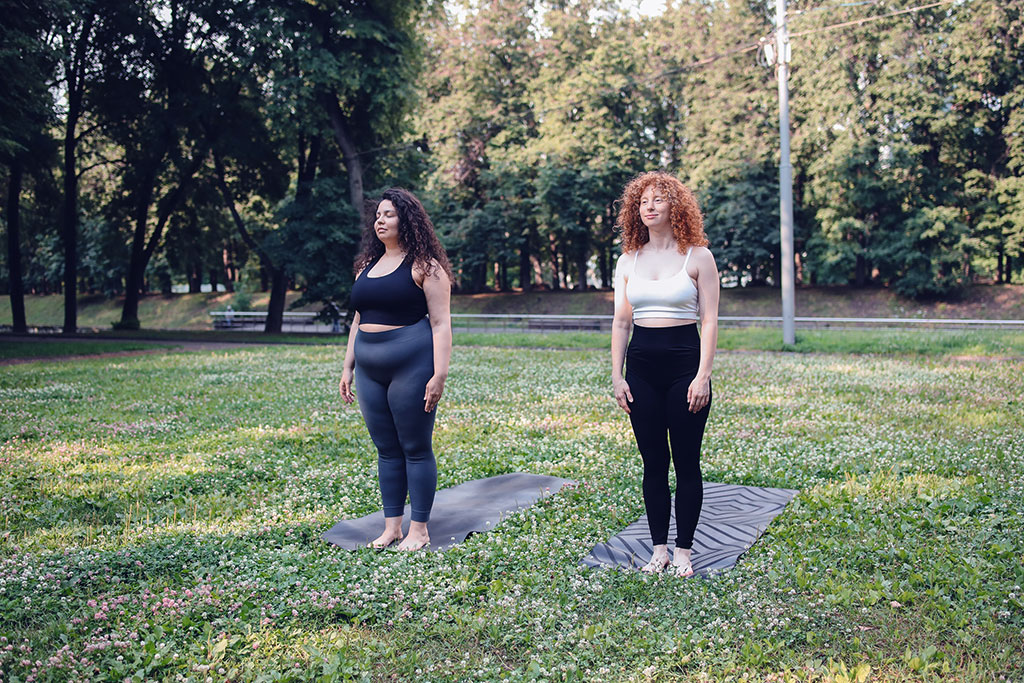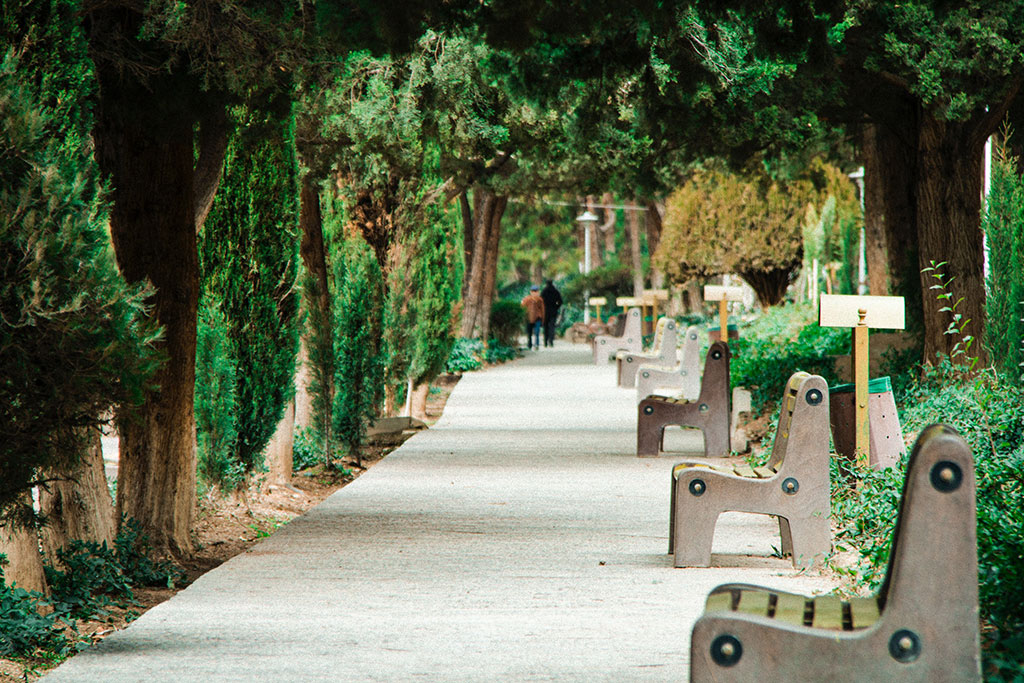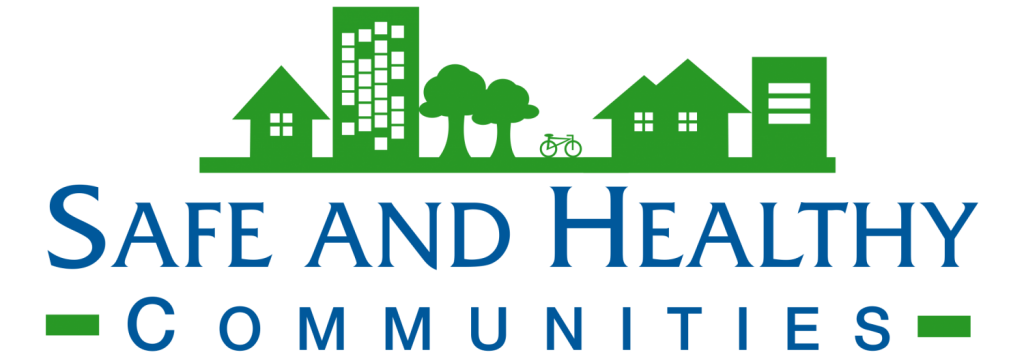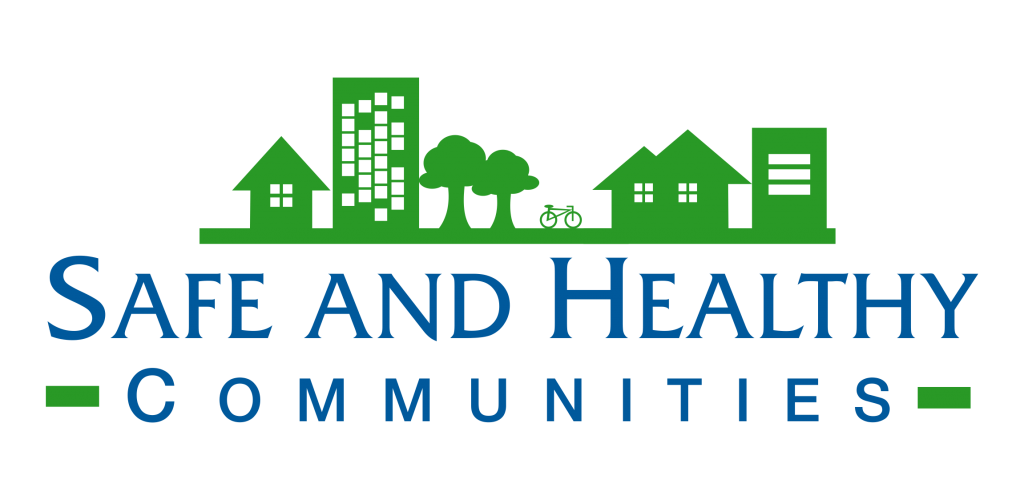Parks and Green Space - How do they benefit health?
- Encourages increased physical activity
- Supports mental health through psychological restoration
- Linked to reductions in all-cause mortality
- Reduces the urban heat island effect and provides shade
- Improves air quality
- Lowers blood pressure, improves mood
 Did you know that even ten minutes in green outdoor space (green and blue spaces) can lower blood pressure, anxiety, and depression? Green space is integral to promoting and preserving the physical, mental, and emotional well-being of all populations. According to a University of Rochester study, outdoor activities can help people feel more energized while also improving their memory and attention. The benefits of parks and green spaces are well documented with research showing that they increase physical activity levels, happiness, socialization, relaxation, and even immune function, while decreasing intrusive noise, air pollution, and feelings of stress, anxiety, and depression. Parks and green spaces are an important part of the built environment that provide populations with the opportunity to recreate and connect with nature, particularly in more urban areas.
Did you know that even ten minutes in green outdoor space (green and blue spaces) can lower blood pressure, anxiety, and depression? Green space is integral to promoting and preserving the physical, mental, and emotional well-being of all populations. According to a University of Rochester study, outdoor activities can help people feel more energized while also improving their memory and attention. The benefits of parks and green spaces are well documented with research showing that they increase physical activity levels, happiness, socialization, relaxation, and even immune function, while decreasing intrusive noise, air pollution, and feelings of stress, anxiety, and depression. Parks and green spaces are an important part of the built environment that provide populations with the opportunity to recreate and connect with nature, particularly in more urban areas.
The absence of accessible green spaces in communities has negative implications for their residents, economic vitality, and the natural environment by detrimentally impacting mental health, increasing crime rate, decreasing economic development opportunities, and diminishing the potential for biodiversity and the preservation of native species. Green spaces also play a significant role in bringing communities together, contributing to their social health and connection. They enhance communities’ social cohesion by providing opportunities for both planned and spontaneous interaction and engagement between residents, such as meeting neighbors for regular walks, volunteering at vegetable gardens, and allowing for intergenerational exchanges to occur, which can reduce loneliness.
 The documented health benefits of parks and green spaces makes them an important component of any healthy community. While recommendations vary, the National Recreation and Parks Association (NRPA) recommends 10 acres of park space per 100,000 individuals as an ambitious target for cities to ensure adequate size, accessibility, and function of green/open space for all residents. While the NRPA provides a quantitative metric to gauge adequate outdoor space, further considerations must be made it ensure that those spaces are accessible and equitable. The mere allocation of land for green space, such as for parks or trails, does not mean that the space is accessible to all populations. Low-income neighborhoods have been shown to have lower access to outdoor spaces compared to higher-income communities, and that the outdoor spaces that they do have access to are less likely to be well-maintained. Outdoor spaces should cater to citizens of a variety of abilities, incomes, and cultures to ensure that everyone can reap the many benefits of outdoor space, improving their health and quality of life.
The documented health benefits of parks and green spaces makes them an important component of any healthy community. While recommendations vary, the National Recreation and Parks Association (NRPA) recommends 10 acres of park space per 100,000 individuals as an ambitious target for cities to ensure adequate size, accessibility, and function of green/open space for all residents. While the NRPA provides a quantitative metric to gauge adequate outdoor space, further considerations must be made it ensure that those spaces are accessible and equitable. The mere allocation of land for green space, such as for parks or trails, does not mean that the space is accessible to all populations. Low-income neighborhoods have been shown to have lower access to outdoor spaces compared to higher-income communities, and that the outdoor spaces that they do have access to are less likely to be well-maintained. Outdoor spaces should cater to citizens of a variety of abilities, incomes, and cultures to ensure that everyone can reap the many benefits of outdoor space, improving their health and quality of life.
While providing access to green space for all populations is important, it is a nuanced issue; the provision of green space must be done to equitably protect historically marginalized populations. Recent studies suggest that new investments in green/open space can increase home values and property taxes, resulting in “green gentrification” and the subsequent displacement of socio-economically challenged populations and Blacks, Indigenous, and people of color. Therefore, while striving to increase green/open space, it is important for municipalities with residents to conduct health impact assessments and to be intentional about considering anti-displacement strategies to ensure equity, accessibility, health, and well-being for all.
How SHC can help:
- Providing expert urban design consultation that incorporates universal design principles to ensure that outdoor spaces are accessible to people of all abilities.
- Researching best practices along with meaningful community engagement in the design, decision-making, and implementation of green/open space so that it is accessible, culturally supportive, and equitable in the different stages of its design creation.
- Assess parks and/or provide technical assistance on using a SHC tool called the Outdoor Livability Assessment Tool (O-LAT), that assists with assessing the safety and accessibility of parks for all ages and abilities
- Conducting health impact assessments to ascertain the health effects, positive and negative, and overall recommendations from evidence- and community-based research of designing and constructing new green/open spaces, particularly for gauging the risk of gentrification and displacement.
- Developing anti-displacement policies that accompany the construction of new green/open spaces to ensure the protection of vulnerable populations from market pressures that come with the desirability of green/open space.
- Providing tools and metrics to assess physical, social, economic, and managerial components of outdoor spaces so that informed decision-making can be made.
- Supporting communities through technical assistance and capacity building, equipping them to with the tools, resources, and understanding to lead future green space community-building efforts.

